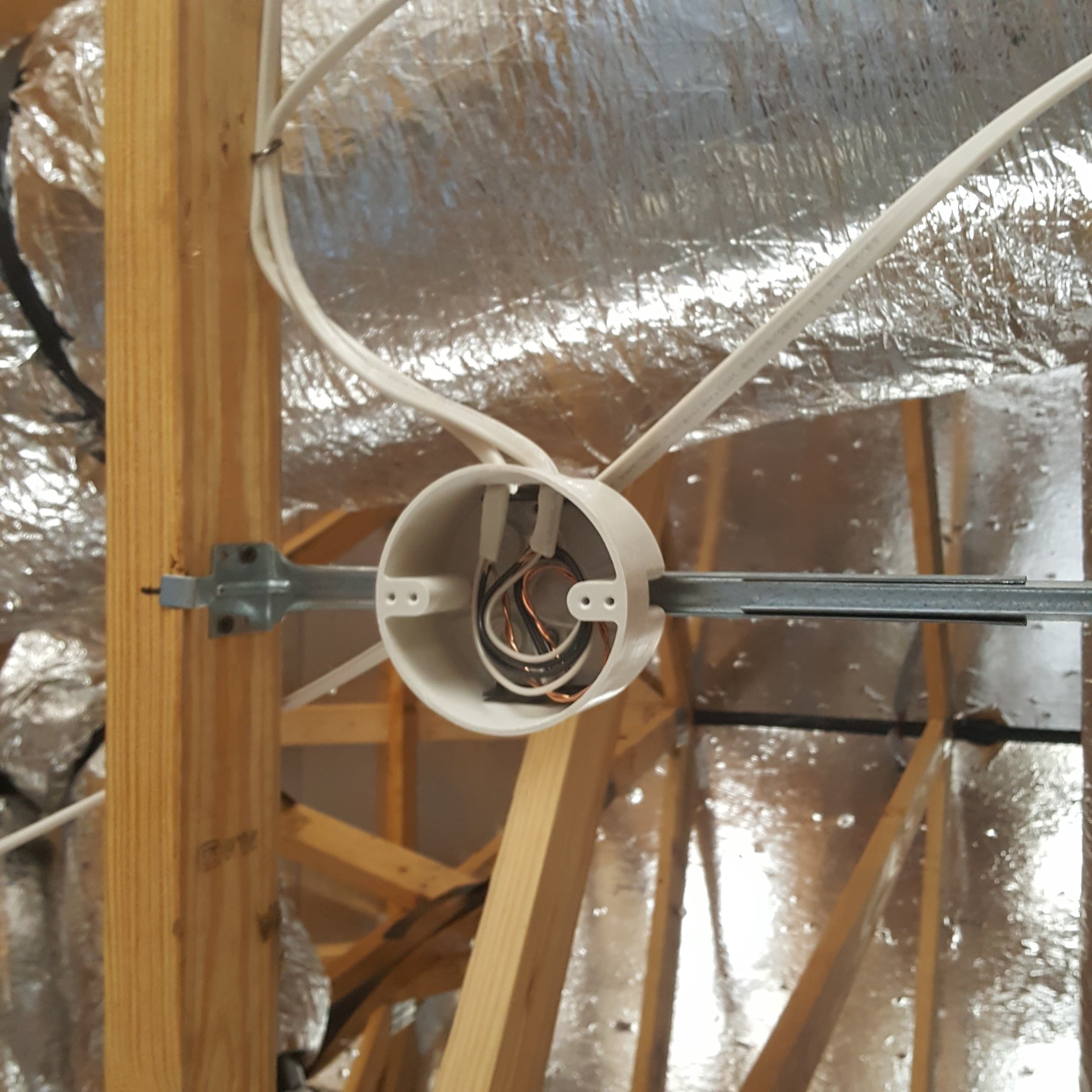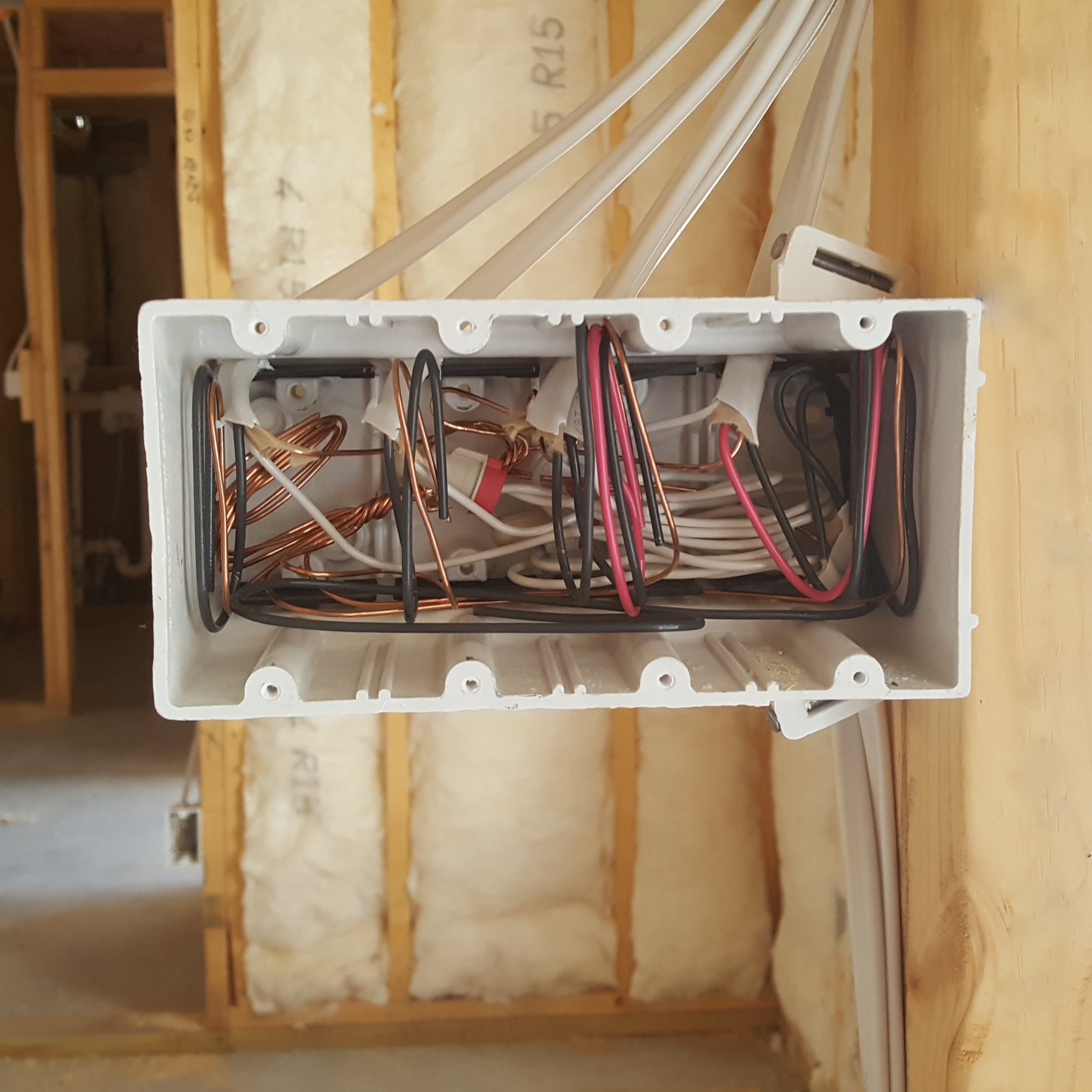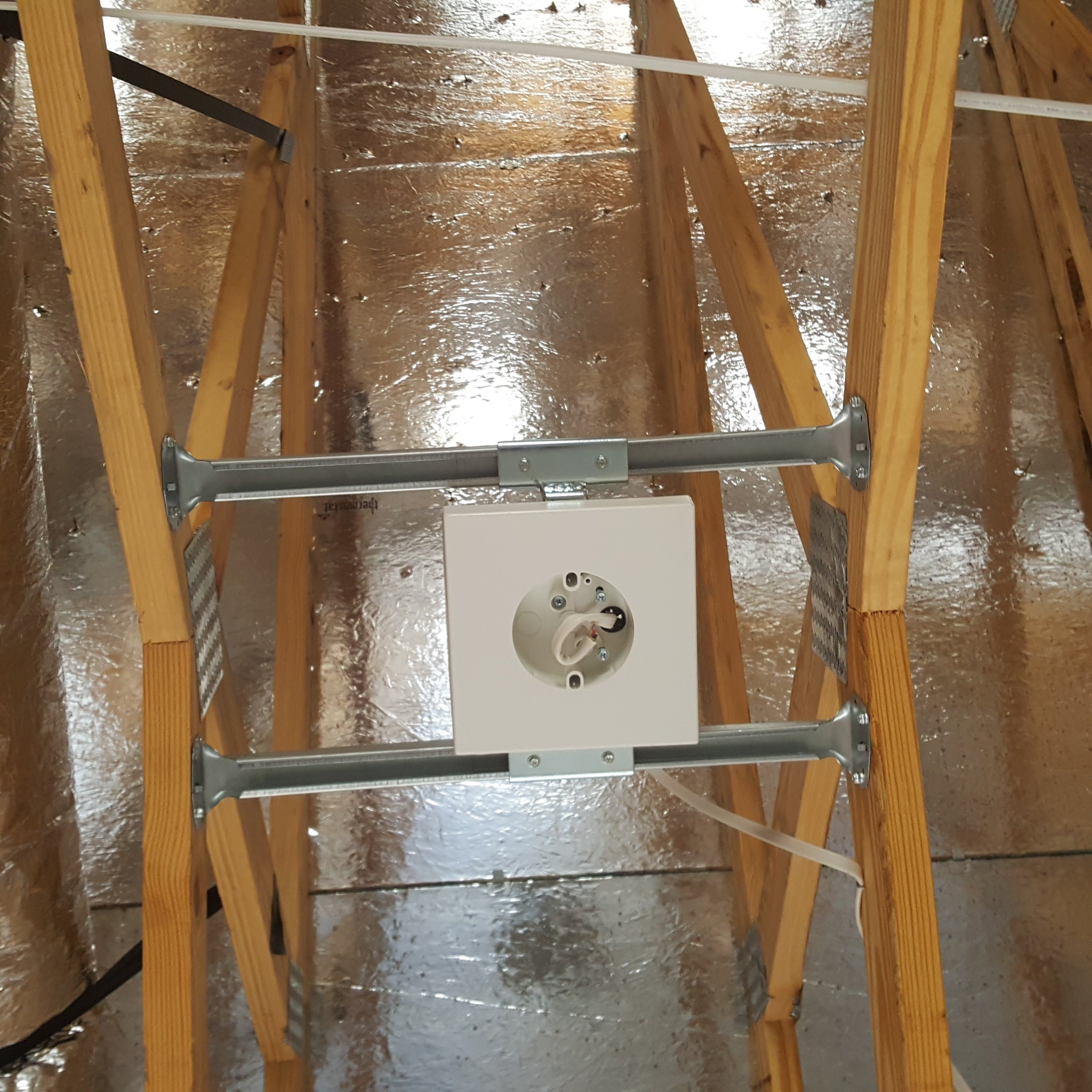THE ELECTRICAL ROUGH-IN
An electrical rough-in means that all electrical cables have been pulled through studs and other framing materials and are inserted into wall and ceiling boxes. At this phase, light switches, outlets, lights, and other devices are not installed. The electrician runs electrical wire from the service panel to various endpoints, such as outlet receptacles and light switches. Within each electrical box, the wire is left bare-ended and unattached. As part of the rough-in inspection process, the building inspector checks the electrical work for proper circuits, electrical box specifications, and cables and wires.
Proper Circuits:
Each space within the home needs to have the proper number of circuits, including dedicated circuits for appliances, such as the microwave oven, washer/dryer, and dishwasher and general lighting requirements. In addition, any outlets or appliances located in outdoor locations, below grade or near sources of water (sinks) must have GFCI circuit protection, and in new home construction, AFCI circuit breakers or outlet receptacles are required.
Electrical Box Specifications:
Electrical boxes are supposed to be flush with the wall, securely fastened, and large enough to accommodate the number of wire conductors in the box. In addition, the boxes should be installed at consistent heights, for example, outlets at least 12 inches above the floor and switches at least 48 inches above the floor.
Cables and Wires:
Cables and wires also have their own requirements, including how the cables are clamped in the boxes, how the cables are anchored, and how much usable wire extends from the box. The wire gauge needs to be appropriate to the amperage of the circuit, for example, 14-gauge wire for 15-amp circuits and 12-gauge wire for 20-amp circuits.
What to Think About:
In addition to the standard electrical rough-ins, you may want to think about adding extra garage, generator, and RV outlets; more lighting, such as recessed or under-the-counter lights; and non-standard switches, such as USB charging. You may also want to change the location and type of light fixtures, for example, instead of a ceiling fan in the bedroom, you may want to change that to a flush-mounted light fixture. If you think that you want to add-on or change your electrical selections, then the electrician needs to “prep” for those requests at the rough-in stage.



